
July 6, 2009
John Alva Keel, 79, a friend, Fortean, fierce fighter for his theories, professionally a writer and journalist, has died. A fellow admirer of Mothman and the anomalies all around us, such as the “name game,” is gone.
Keel, who lived most of his life in New York City, passed away on Friday, July 3, 2009, at Mount Sinai Hospital in New York City, after some months in a nursing home near his Upper West Side apartment.

In 1994, John A. Keel made a rare appearance at a birthday celebration held in his honor among a few of his closest friends. Pictured are J. Antonio Huneeus, Keel, and Loren Coleman. Photo by Patrick Huyghe.
Born Alva John Kiehle in upstate New York on March 25, 1930, John Keel began writing at a young age. Indeed, Keel’s first published story was in a magician’s magazine at the age of 12.
Keel would go on to become a scriptwriter for radio and television, and a stringer for newspapers. He later moved to Greenwich Village and wrote for various men’s and speciality magazines.
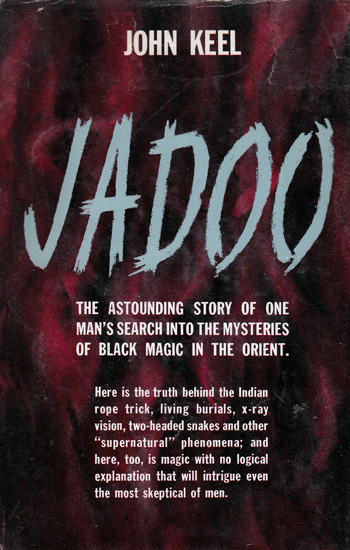
Keel’s first published book was Jadoo in 1957, which was quickly serialized in a men’s adventure magazine. The paperback is his account of his journey of discovery to India to investigate the alleged activities of fakirs and holy men who perform the Indian rope trick and who survive being buried alive. In Jadoo, Keel also told of tracking a Yeti, an Abominable Snowman, in the jungles of Asia.
John A. Keel’s non-fiction look at the very real unplanned twists in life were recorded in his 1966 novel, The Fickle Finger of Fate. It is a rare book, and few realize that Keel wrote this book.
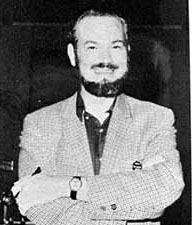
Keel was an early admirer of Charles Fort (1874-1932), and while still doing the mainstream writing, began authoring articles for England’s Flying Saucer Review (FSR) and a long series of columns for Saga.
Further influenced by Fortean Ivan T. Sanderson and ufologist Aimé Michel, in early 1966, John Keel commenced a full-time investigation of monster, aerial and paranormal phenomena. Over a four-year period, Keel interviewed thousands of people in over twenty U.S. states, especially in the Ohio River Valley of the United States. More than 2,000 books were reviewed in the course of his investigation, in addition to thousands of magazines, newsletters, and newspapers. Keel also subscribed to several newspaper-clipping services, which often generated up to 150 clippings for a single day during the 1966 and 1967 UFO “wave.” Besides FSR, Keel wrote for several magazines including Saga with one 1967 article “UFO Agents of Terror” referring to the Men in Black. He also wrote one of the first articles on Mothman in FSR, during this same time period.

Like other contemporary 1960s researchers such as J. Allen Hynek and Jacques Vallée, Keel was initially hopeful that he could somehow validate the prevailing nuts-and-bolts, extraterrestrial visitation hypothesis for UFOs. However, a year into his investigations, Keel realized that the extraterrestrial hypothesis was untenable and did not explain, for him, based within his personality and belief systems, all the answers.

Keel’s insights also included his view of cryptozoology.
I grew to know Keel after being introduced to him through mutual friends Brad Steiger and Ivan Sanderson. I worked closely with Keel on contributing as yet-unpublished material of mine for his book, Strange Creatures from Time and Space (1970), which would influence my and Jerome Clark’s first two books The Unidentified (1975) and Creatures from the Outer Edge (1978).
Keel’s impact is far-reaching. Keel’s book, Strange Creatures from Time and Space was the inspiration for Craig Woolheater’s interest in Bigfoot and eventually would stimulate the creation of Cryptomundo.
Love him or hate him, John Keel was popular and one of the most widely read and influential Fortean authors of the late 20th century. Although his own thoughts about aerial, monster, and associated anomalous phenomena gradually evolved during the 1960s, Keel remained one of ufology’s most original and controversial researchers.
It was Keel’s second book, UFOs: Operation Trojan Horse (1970), that alerted the general public that many aspects of contemporary UFO reports, including humanoid encounters, often paralleled certain ancient folklore and religious encounters. Keel also argued that there is a direct relationship between UFOs and elemental phenomena. Keel informed me often that he did not consider himself a “ufologist,” but a “demonologist.”
“Ufology is just another name for demonology,” John Keel told me, a week before the September 11th attack on the World Trade Center, which occurred just a couple of miles from where he lives.
…as noted in Mothman and Other Curious Encounters, page 114, (NY: Paraview, 2002).

As Keel himself wrote, “I abandoned the extraterrestrial hypothesis in 1967 when my own field investigations disclosed an astonishing overlap between psychic phenomena and UFOs… The objects and apparitions do not necessarily originate on another planet and may not even exist as permanent constructions of matter. It is more likely that we see what we want to see and interpret such visions according to our contemporary beliefs.”
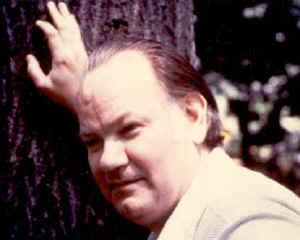
In UFOs: Operation Trojan Horse (1970), Keel argued that a non-human or spiritual intelligence source has staged whole events over a long period of time in order to propagate and reinforce certain erroneous belief systems (mirroring Vallée). Keel conjectured that ultimately all anomalies, such as fairies, 1897 mystery airships, 1930s phantom aeroplanes, mystery helicopters, creatures, poltergeists, balls of light, and UFOs, are a cover for the real phenomenon.
It was during this time period that Keel maintained an enormous and active correspondence with other researchers around the world. For example, I, Loren Coleman, was introduced to my now long-time friend Jerry Clark by John Keel, via letters. These exchanges between Keel and his fellow writers and researchers, even as intellectual disagreements and different paths took many of us on varied journeys, cemented 40 years of solid friendships among a small group of dedicated Fortean writers.
In Our Haunted Planet (1971), Keel coined the term “ultraterrestrials” to describe the UFO occupants. He discussed the seldom-considered possibility that the alien “visitors” to Earth are not visitors at all, but an advanced Earth civilization, which may or may not be human. Keel took no position on the ultimate purpose of the phenomenon other than that the UFO intelligence seems to have a long-standing interest in interacting with the human race.
UFO historian Jerome Clark wrote that Keel was “a radical theorist who believes that UFOs are ‘ultraterrestrial’ rather than extraterrrestrial. By that he means they are shape-changing phenomena from another order of existence. These ultraterrestials are basically hostile to, or at least contemptuous of, human beings and manipulate them in various wasy for example by staging ‘miracles’ which inspire unfounded religious beliefs. Ultraterrestrials and their minions may manifest as monsters, space people, ghosts and other paranormal entities.” (The UFO Encyclopedia, Volume 1: UFOs in the 1980s, page 148, NY: Agogee, 1990).
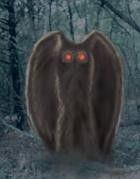
After years of writing parts of the story in various articles and other books, in 1975, Keel published The Mothman Prophecies, an account of his 1966-1967 investigation of sightings of the Mothman, a “winged weirdie” reported in and around Point Pleasant, West Virginia.
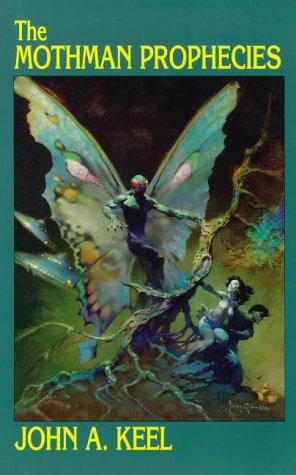
Keel corresponded with Ivan T. Sanderson, quietly for months, trying to determine what kind of bird might be involved with the sightings. It was later, as Keel more fully revealed the tale of the sightings and concurrent phenomena, that other elements came into the mix.
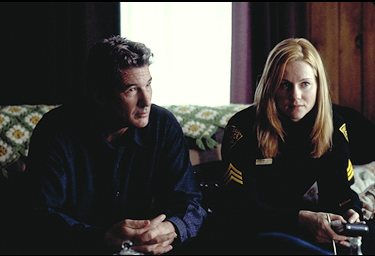
The book was contemporarily adapted into a 2002 movie directed by Mark Pellington, starring Richard Gere, Debra Messing, Laura Linney and Alan Bates.
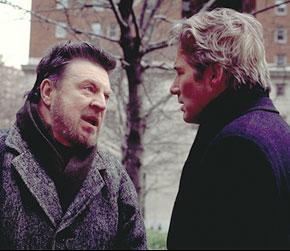
Two parts of Keel’s personality were played by Gere and Bates. Bates’s character was “Leek,” which was “Keel” spelled backwards, and Gere’s character was a newspaperman, “John Klein,” also a play on Keel’s name. Because Keel was ill at the time, Sony/Screen Gems cut back Keel’s schedule of public appearances to only a few televised ones. I assisted Keel by becoming the movie’s publicity spokesperson on 400 radio shows, and appeared with Keel in the David Grabias documentary Search For The Mothman, which is in the Deluxe DVD of The Mothman Prophecies.
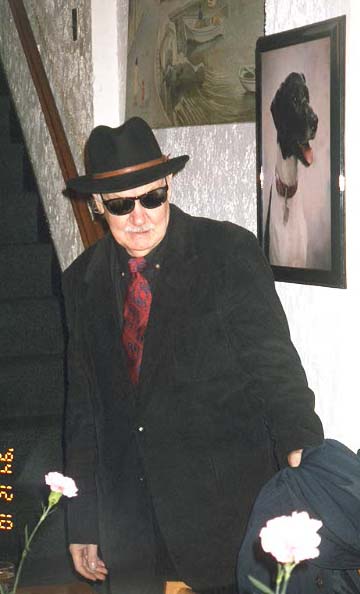
Keel often played, with tongue-in-cheek, on the Men-In-Black interest swirling around his work.
At the time of the release of the movie, a rumor circulated that Keel had died. On January 14, 2002, a story rapidly made the rounds via the web that John A. Keel had just died.

John A. Keel, in 2002.
I quickly put the rumor to rest by calling Keel, and confirming that Keel was, indeed, still alive, although Keel quipped that everyone should be told, “his funeral is on Saturday and he will be wearing black.” Keel told me that this happened to him at least once before, in 1967.
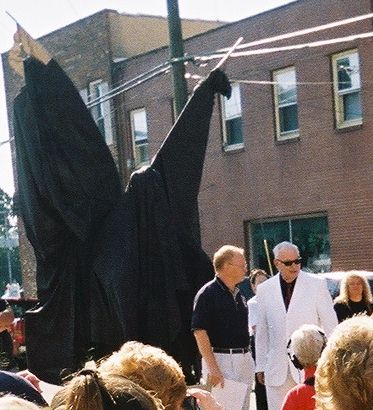
In recent years, Keel’s appearances would be few and far between. But his sense of humor never left him, including wearing an all white suit to the Mothman Festival in Point Pleasant, West Virginia for the unveiling of the new Mothman replica.
Keel suffered a heart attack sometime before October 13, 2006. He admitted himself to New York City’s Lenox Hill Hospital on Friday the 13th of October, and underwent successful heart surgery on October 16, 2006. Keel then was moved from the hospital to a rehabilitation center on October 26, 2006, as his close New York friend Doug Skinner told me soon afterward. Skinner became invaluable in assisting Keel, and passing along messages to and from Keel’s old friends.
Keel’s impact cannot be underestimated, especially in terms of his analysis of patterns. His work on “windows” (specific hotspots of combined phenomenal appearances), “waves” (cyclic appearances of the phenomena), and the “Wednesday phenomenon” (the theory that a disproportionate number of UFO events occur on that day of the week) are deeply influential across time and space. Generations of readers of Fortean literature often do not even realize that Keel’s writings may be behind “name game” discussions or authors’ speculations on the fact that a certain location on a ridge might have a high rate of strange events occurring there after the 21st of the month on a Wednesday in a high-frequency month such as April. Keel was there first trying to look at such patterns.
The popular cultural influence of Keel has been enormous. It shall take future academic studies to fully realize his reach among the subculture that respects and are denizens of his ongoing intellectual playground.
On July 6, 2009, as word swept through the Internet, from Phyllis Benjamin at INFO and others, that Keel had passed away last Friday, tributes and sorrow were shared online in overwhelming fashion from his followers, fans, and friends.
John A. Keel will be missed.
John A. Keel Bibliography
Jadoo. (NY: Tower, 1957)
The Fickle Finger of Fate. (Greenwich, CT: Fawcett, 1966)
UFOs: Operation Trojan Horse. (NY: G. P. Putnam’s Sons, 1970) (reprint, Atlanta: Illuminet Press, 1996)
Strange Creatures From Time and Space. (Greenwich, CT: Fawcett Gold Medal, 1970)
Our Haunted Planet. (1971) (rev., Lakeville, MN: Galde Press, 1999)
The Mothman Prophecies: An Investigation into the Mysterious American Visits of the Infamous Feathery Garuda. (NY: Saturday Review Press/E. P. Dutton, 1975; NY: Signet, 1975), (rev.. NY: Tor, 2002)

The Eighth Tower. (NY: Saturday Review Press/E. P. Dutton, 1975)
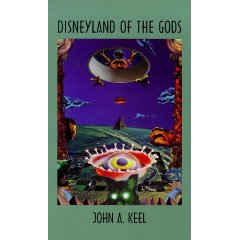
Disneyland of the Gods (NY: Amok Press, 1988) (reprint, Atlanta: Illuminet Press, 1996)
The Complete Guide to Mysterious Beings. (NY: Bantam Doubleday Dell Publishing Group, 1994) (rev. edition of Strange Creatures from Time and Space)
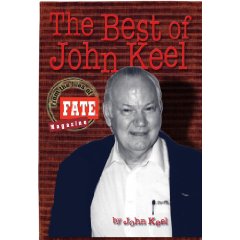
The Best of John Keel. (Lakeville, MN: Galde Press, 2006)
+++
For more on John A. Keel’s legacy, see Chapter Seven, “Keel’s Children” in Mothman and Other Curious Encounters.
For new details on his last days, please see the recently added “Keel Ends Life Rather Alone.”.
About Loren Coleman
Loren Coleman is one of the world’s leading cryptozoologists, some say “the” leading living cryptozoologist. Certainly, he is acknowledged as the current living American researcher and writer who has most popularized cryptozoology in the late 20th and early 21st centuries.
Starting his fieldwork and investigations in 1960, after traveling and trekking extensively in pursuit of cryptozoological mysteries, Coleman began writing to share his experiences in 1969. An honorary member of Ivan T. Sanderson’s Society for the Investigation of the Unexplained in the 1970s, Coleman has been bestowed with similar honorary memberships of the North Idaho College Cryptozoology Club in 1983, and in subsequent years, that of the British Columbia Scientific Cryptozoology Club, CryptoSafari International, and other international organizations. He was also a Life Member and Benefactor of the International Society of Cryptozoology (now-defunct).
Loren Coleman’s daily blog, as a member of the Cryptomundo Team, served as an ongoing avenue of communication for the ever-growing body of cryptozoo news from 2005 through 2013. He returned as an infrequent contributor beginning Halloween week of 2015.
Coleman is the founder in 2003, and current director of the International Cryptozoology Museum in Portland, Maine.
Filed under Avian Mysteries, Books, Breaking News, Conspiracies, Cryptomundo Exclusive, CryptoZoo News, Cryptozoologists, Cryptozoology, Media Appearances, Men in Cryptozoology, Mothman, Obituaries, Television, Twilight Language